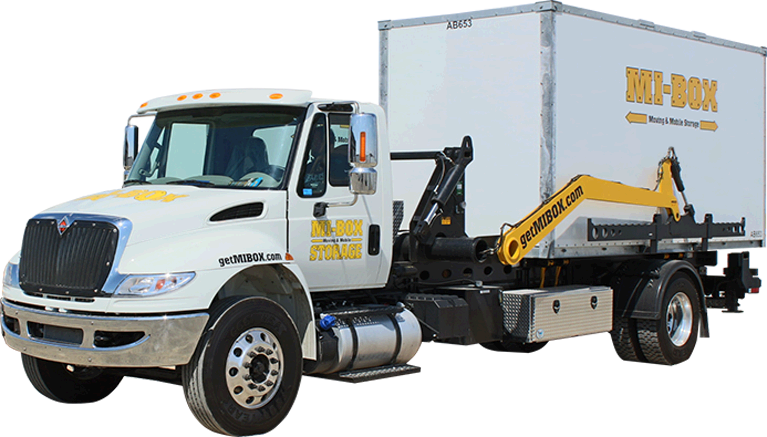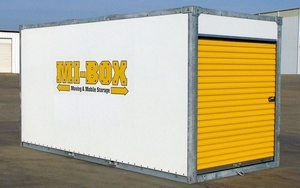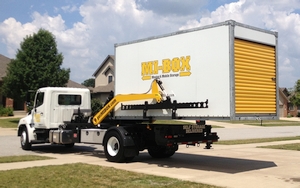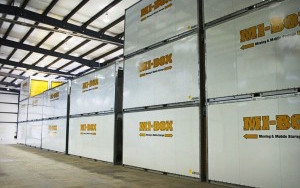What is the best way to take care of my goods?
Nothing is more important to the care of your goods than how they are padded, wrapped, and packed. The best movers will wrap your furnishings in quilted moving blankets and use tape or plastic shrink-wrap to hold these blankets in place so your goods stay protected. You do not want your furniture rubbing against other things while your container rolls down the road. Blankets prevent that, and shrink-wrap or tape holds the blankets in place. Ideally, when your furniture goes into the container, it should look like a blue (or whatever color your blankets are) cube wrapped in plastic or taped up.
Then they will fill the container back to front, stuffing small things in the gaps so that the loaded box has a structure like a Tetris puzzle of interlocking blocks. That keeps things from shifting as we drive down the road.
Your container may look like a self-storage room while you are loading it, but once we pick it up, we have to drive down the same roads you do with the box, so having things well padded and tightly packed keeps things from shifting as we drive. Gravity means things are always trying to work their way downward, so a good packing job will keep your contents from doing that.
We can rent or sell you blankets for your or your movers’ use. If you are storing with us, your movers will probably not be able to leave their blankets on your goods as they need them for the next move they do. That is why we both rent and sell moving blankets.
You will also need a lock for your container. You can get one from Home Depot or anywhere else that sells padlocks, or we can sell you a high-security stainless steel DISC lock for your container.
If you rent blankets from us, please remember to count them back in when you are all done to avoid being charged for missing blankets.
Let us know in advance if you want blankets added to your order as it may affect how we arrange the delivery schedule for the day.
Remember that using mobile storage is like using a rental truck – you are responsible for packing your goods so that they can safely transit the roads. We will not see what you have packed or how you have packed it. Good wrapping and packing for transit is the only way to protect your contents for the move, so getting help is wise if you are not sure you can do it. Just let us know, and we can tell you about some good movers with experience doing just that.





